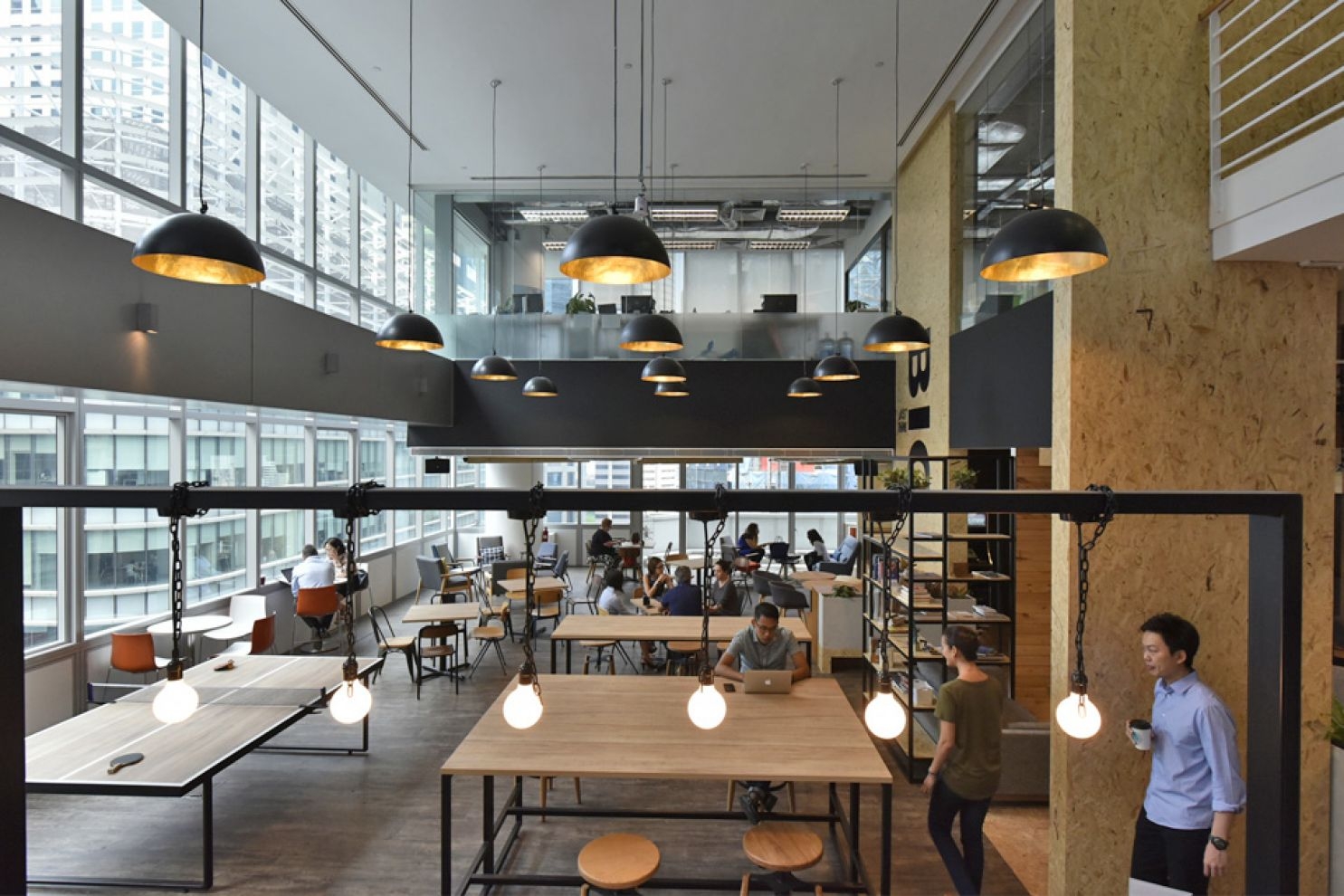Activity-based working, co-working the new buzzwords on office scene

ACTIVITY-BASED working has been a buzzword of the office sector, gaining significant traction in recent times. However, is it really the future of the workplace or just another cost-cutting measure?
Companies over the years have already increased office space densities significantly in order to reduce cost. As they come under further pressure to make additional savings on real estate-related expenses, activity-based working has proven to be equal to the task. Where office planning was typically designed at a ratio of 100-150 square feet per person, this can now be reduced to a lower ratio after incorporating activity-based working elements.
However, the primary objective of implementing activity-based working is not cost savings. The understanding of activity-based working centres on the idea that work is an activity and not confined to a place. Essentially, no employee has an assigned workstation while the workplace will provide a variety of activity areas for people to choose from. In doing so, it allows employees to manage and maximise their productivity. Hence, its real benefits lie in helping drive greater employee engagement, fostering creativity and collaboration among workers - eventually leading to higher business performance.
The viability and adoption of this concept are expected to only strengthen and grow at a faster pace as a result of two key enablers: rapid advances in mobile, information and cloud technology; and the growth of the millennial working population.
The shift towards activity-based working points to a trend of gradual decline in office footprints of occupiers. Demand for offices will remain but will be more targeted with the focus on space of higher quality and in better locations. Landlords of older office space in poorer locations could find it increasingly difficult to secure enough tenants. Upgrading the building specifications through asset enhancements or redevelopment is one option. Other possibilities include a re-alignment of use and zoning.
Co-working is the private sector's response to meet the occupier's preference for activity-based working. Firms that wish to practise flexible workplace strategies but do not have the resources or scale to implement them internally can now turn to such spaces. These facilities may be found in a variety of places - office, shophouse, shopping mall, industrial building etc and are run by "mini-landlords". They are generally membership-based shared workspaces catered for workers from different companies and industries. The distinctive feature of these spaces revolves around the idea of community-building and fostering collaboration among its users.
At first glance, co-working space operators represent a threat to conventional office landlords as they both essentially provide the same type of real estate service. A closer examination, however, would reveal that the target occupiers of the two segments are in fact quite different.
Classic office landlords prefer medium and larger-sized corporates which take up bigger spaces and generally sign longer lease agreements. Co-working space providers, on the other hand, tap a demand pool comprising mostly startups and SMEs which have smaller and more fluid requirements in terms of size and lease duration.
The impact of co-working as a potential demand driver cannot be ignored by landlords. The co-working market saw about 10 new operations in 2016 as total market size grew 35 per cent from 306,000 square feet to about 414,000 sq ft. Based on CBRE's estimates as at time of print, 2017 will see the market grow by an additional 57 per cent to 651,000 sq ft.
CBRE forecasts that the proportion of islandwide office stock occupied by coworking facilities will double to 0.6 per cent this year from 0.3 per cent last year. While traditional sectors will still be the main drivers of office demand, co-working is a welcome boost for landlords in a muted market.
Future opportunities
From the perspective of landlords, the benefits of collaborating with co-working operators are multi-fold. Firstly, co-working operators tend to sign fairly long leases due to the need to amortise fit-out expenditures. This allows landlords to lock up income for a relatively long period of time. At the same time, landlords enjoy a higher level of flexibility in their operations. Tenants who do not fit under a traditional lease can now be accommodated through the shared space agreement. When some of these outfits begin to outgrow these co-working premises, the building landlord could possibly have the first opportunity to move them to another larger office space in its portfolio.
Unsurprisingly, many landlords are now more open to co-working with a number of them actively looking for a suitable operator to partner with. Recent examples include Ascendas-Singbridge's partnership with Spacemob at Ascent (at 2 Science Park Drive), as well as City Developments' 24 per cent investment in Distrii.
That said, there are some concerns regarding the sustainability of growth of co-working space. Due to exclusivity agreements, most office buildings are able to accommodate only one co-working operator. This in turn significantly limits the range of quality options that co-working providers can be housed in.
Secondly, with a number of new large-sized facilities expected in 2017 and 2018, it raises the question of whether the market is becoming saturated. The strength of take-up in these new locations will be a key barometer of whether there is a sufficiently large demand pool to fill up these spaces. On the bright side, the focus on strengthening startups and SMEs as outlined in the Committee for the Future Economy could provide a demand boost.
Co-working occupiers, on the other hand, stand to be the biggest beneficiaries. Competition among incumbent players is likely to intensify in the short term as operators fight to maximise market share. As a result, rental and membership rates are expected to be very competitive. This will be an ideal opportunity for potential tenants to lease quality space in prime locations at affordable levels.
On a longer-term perspective, some consolidation is expected as the co-working market matures. Looking at the likes of international operators such as WeWorks, the scale and size of community have proven to be of utmost importance in having a successful business model. Smaller niche co-working operators will find it increasingly difficult to compete effectively without sufficient economies of scale. Mergers and acquisitions between the larger players in Singapore or even with international operators are a strong possibility. The blurring of lines between serviced offices and co-working could also result in some synergistic partnerships between key players in the near future.
The future of co-working is anyone's guess and most of the world may not even work in the current form as we know it today. Nevertheless, its emergence has led to an inexorable fundamental change in the attitudes and mindsets towards the traditional office format. In line with the government's call to embrace disruption, office landlords and operators would do well to be nimble and build the necessary capabilities to be future ready.




